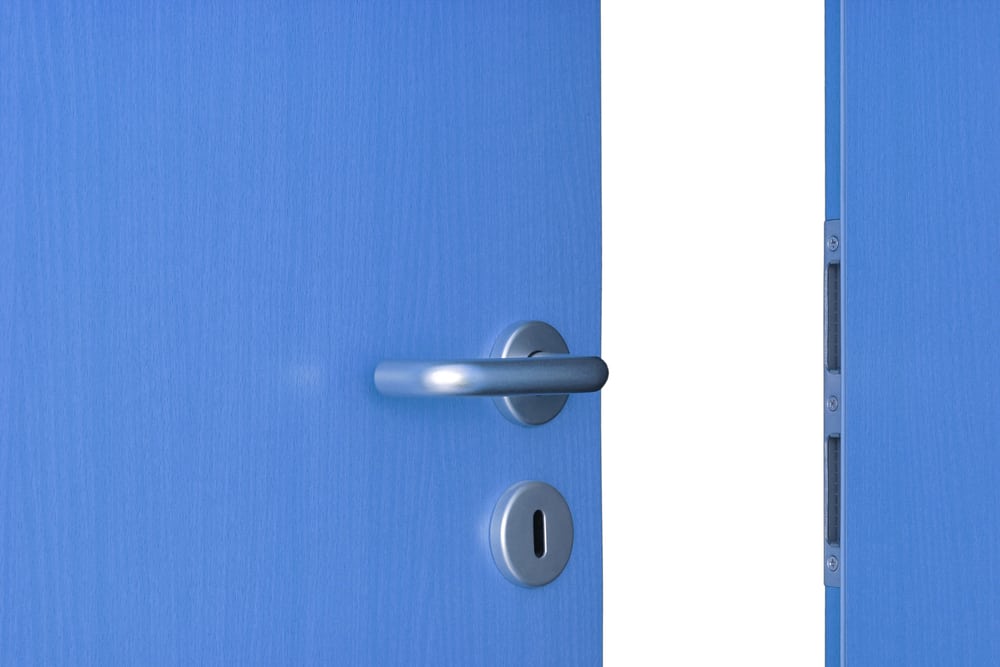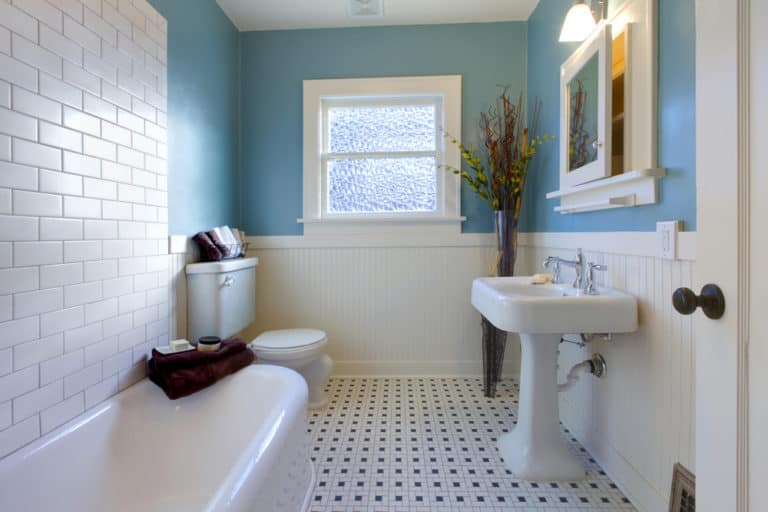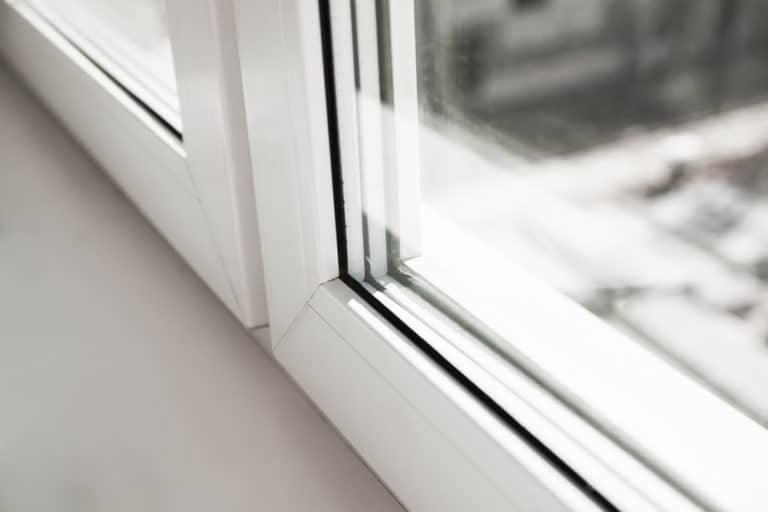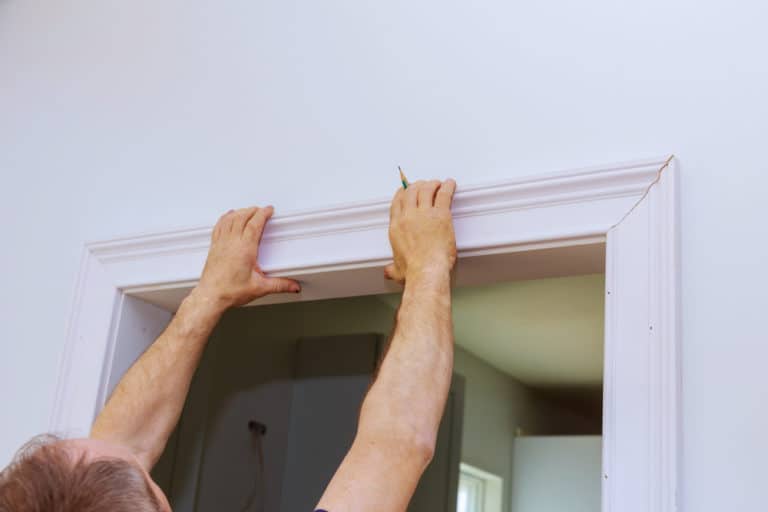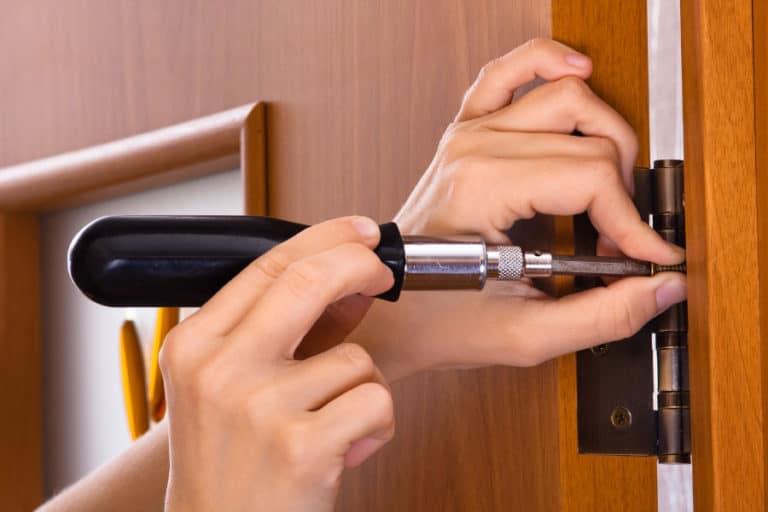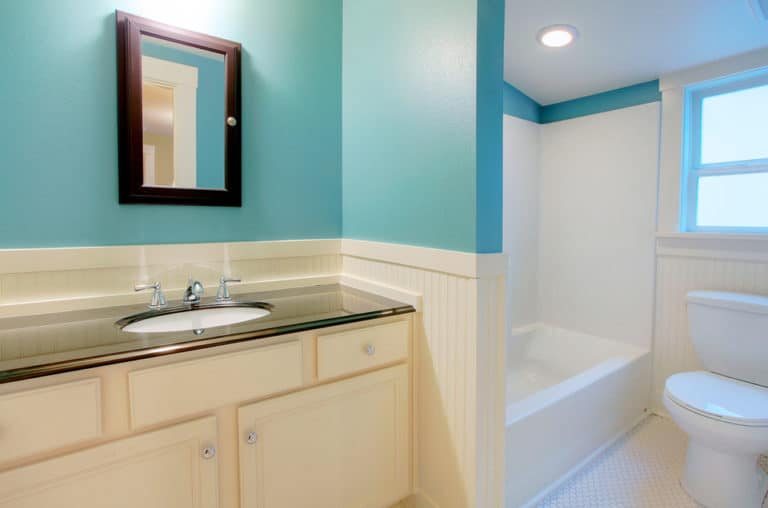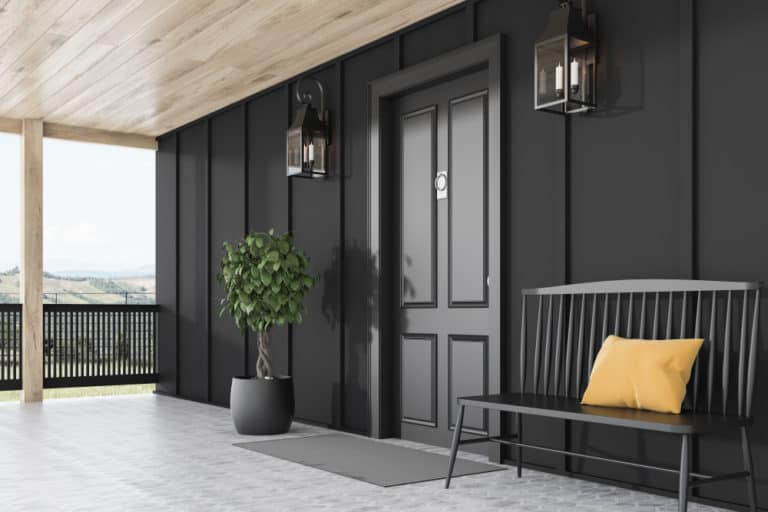How Much Gap Should Be On The Side Of A Door?
When you are renovating a home or a room and you are done installing the door, the last thing you want to see after all your hard work is a huge gap between the frame and the door at the sides. When the gap is too big, the door will look skewed, and it won’t be as structurally sound as it should be. So, how much gap should be on the side of a door?
When you install a door, you need to ensure a gap of no more than 2mm at the sides of the door and the top. The bottom should have at least an 8mm gap to keep your flooring options open. So in all, there should be 10 mm of a gap between the top and bottom and 2mm on each side of the door.
I had this problem when I installed my bedroom door after renovating it. It looked like the door was a size too small to fit in the regular frame. I called a contractor friend I have to help me understand what went wrong and how to fix a huge gap between the door and the frame. I wanted to share what I found in this post so it can help someone else.
How Much Gap Should Be On The Side Of A Door?
The size of the door you will install will When you are installing a new door, you need to have between 2mm – 3mm or 1/8 -inch gap on each side of the door. The top gap should be ½-inch, and the bottom should be at least ¾-inch to ensure the door can open and close without difficulty and to allow room for a flooring material that might take up some space like carpets.
If the gap is too big or too small, the door will hang skewed in the frame or won’t fit. The gap between the frame and the door is called the ‘stile clearance’ or ‘gap tolerance.’ Knowing and understanding the terminology will help you get the right information if you need to consult a contractor for help.
Why Should There Be A Gap On The Side Of A Door?
The gap or stile clearance on the side of the door help to ensure the door fits in the frame perfectly. These gaps that are at the sides, top, and bottom are essential because it allows the door to open and close without any obstruction.
The side gaps need to be continuous because if even one spot on the edge of the door rubs or touches the frame, the door won’t close and will have difficulty opening up. You need to ensure that the hinges are securely fitted for your door, so your door hangs correctly.
If the hinges are not suited to the door you are installing, or you install the hinges sloppy and not secure, the door’s weight will close that 1/8-inch gap causing the door to hang skewed, and it won’t be able to open.
What Can Happen If There Isn’t A Gap At The Side?
If you install a door and you do a ‘dry fit’ (placing the door loosey in the door frame to see if it fits and to measure how much you need to trim if it doesn’t fit) beforehand, you might find that there is no gap between the door frame and the side of the door.
That means the door is the wrong size or the installed frame is the wrong size. If this happens and you go ahead and install the door without trimming the sides, top, and bottom (if needed), you might have the following problems.
- They might not fit the frame after the hinges are installed
- The door won’t be able to open or close
- The door will hang skewed
- A part of the door frame might touch the edge, and it won’t open or close.
What Can Happen If The Gap Is Too Wide?
If the gap between the door and frame is too big between the sides, top, and bottom of the door, it will have a negative effect on your home’s heating system and air conditioning system. The air supposed to circulate through your home will escape through these gaps.
It will cause the cold air to travel through the gaps and outside in the summertime, leaving you with hot and humid air. In the winter, the hot air will escape and let in the cold air, so you will be forced to keep the heating system going strong.
What Can Happen If The Gap Is Uneven?
When the gap between the door and frame is uneven or skewed, it will cause the door to hang at an angle. That means:
- The door will have trouble opening and closing
- The edges of the door will rub against the frame, and it will stick
- The cold or hot air will escape wreaking havoc on the temperature in your home
- The weight of the door may cause the hinges to rip out of the frame if the gaps are not balanced
How Can You Tell If The Gap Is The Right Size?
When you are new to DIYs and want to make sure the gap on the sides of a door is the right size, you need to have a gap of between 2mm-3mm or 1/8-inch. To ensure this is accurate, you can check using one of these ways:
- You can measure the distance between the door and the frame with a measuring tape.
- You can put a piece of wedge a little smaller in the gaps, moving it up and down the gaps to see if it lodges anywhere. You should measure that spot and see if it needs fixing if it does move.
- You can also use a ruler when measuring the entire door and frame it at random spots to see if it varies anywhere.
The Gap Difference Between A Prehung Door And Normal Door
When you install a prehung door, it means the manufacturer builds the frame and hangs the door on it for easy installation. However, that is not always the case. As we all know, there can be things we forget to do when working on any DIY project.
So if you are installing a prehung door, you must remember to adjust the frame with shims and leave a 2mm-3mm or 1/8-inch gap. That will work better than having to fix the door or frame once it has been installed and you see there is a gap that is too big or too small.
A normal door is the one you install from scratch. You buy the door, the wood for the frame, and the nails or screws separately. You can decide the install the door and ensure the correct size gap between the door and frame.
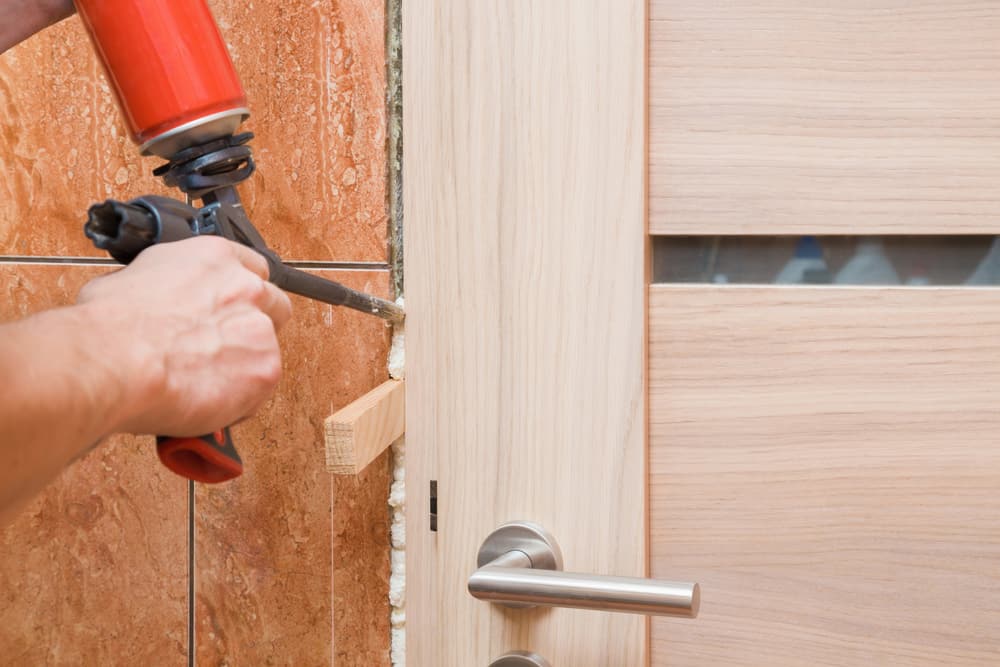
How Can You Fix A Side Gap That Is Too Big?
If you need to fix a big gap on a prehung door, you might want to try one of these methods.
Method Number 1
Before you damage the paint on the trim to get to the door frame, try putting a 1/16-inch cardboard shim behind each hinge (between the hinge and the door frame). This shim will help widen the space on the hinge side and close the space on the latch side, ensuring the latch side can close more easily and securely.
You need to loosen the hinge screws located in the jamb, then put the cardboard shim in place and refasten the hinge. It should close the gap at the latch side while slightly widening the gap on the hinges side.
Method Number 2
First, you will need to tighten the door hinges. After you have done that, try to move the door up and down by the handle, if the door doesn’t budge, you only have a loose hinge, and you won’t need to do anything more.
If you see the screws turning, but the hinges are not tightening, the wood might be hollowed out. You need to use longer and wider screws to dig into the wood that is not hollowed out.
Method Number 3
If the door has a gap at the hinge side and there is no gap on the latch side. Your goal is to recess the door further into the hinge, more to the door frame and less to the latch side. It will help balance the clearance, and your door should be less skewed. Here is what you need to do:
Step 1
You need to remove or adjust the hinge reinforcements. If your door is older, you might have installed some with the door. These reinforcements include shims, plates, and wire spacers. You need to relieve the tension by opening the door and putting a wooden wedge under the door; it will act as a support by relieving the tension of the door’s weight.
Step 2
Starting with the top hinge, loosen the screws of the hinge. If your door already has reinforcements, you can adjust or remove them to help recess the door more to the hinge side. If you are not sure how you should adjust the reinforcements, you can check with the manufacturers.
Step 3
Now retighten the hinge leaf to the door with screws. Adjust or remove the middle and bottom reinforcements and retighten all the hinges when you are done.
Step 4
Remove the wedge from under the door and check to see how much clearance is on the latch side. If the clearance is fixed, you are done.
How Can You Fix A Door Without A Side Gap?
If you are installing a door and it has no gap clearance, you need to trim a little off each side of the door.
Measure the width of the door frame and add the 1/8 inch (2mm-3mm) gap. Now you have the width your door needs to be. You can divide the space that you need to take off in two so both sides are equally trimmed (or you might end up with a skewed door).
It’s important to have the measurements right before you cut, or it might ruin your door. If you are not sure about trimming the door, you can take the door and the measurements to the hardware store, and they will help you trim the door professionally, so it fits perfectly.
Tips For Ensuring The Gap At The Side Of A Door Is Correct
When you have an issue with the side gaps of a door, you need to either balance a too-big gap or create one if it’s not there. The list below are some tips to help ensure you have the right gaps:
- Before buying the door, measure the frame so you know what size to buy exactly
- If you buy a door, buy hinge reinforcements in case your door needs to reduce a gap
- Use longer screws to avoid it tearing out and to secure your door better to the frame
- If the door needs to be trimmed a bit off the door sides, bottom or top, you need to trim both opposite sides, so you don’t end up with a skewed pattern on the door.
- If you are not sure of something, it’s best to ask for help from someone with experience in installing doors.
- If your old door was a perfect fit, take its measures, and you are sure to have the best measurements needed to buy your new door.
Conclusion
While installing doors is not the most complicated DIY, it can get challenging if you are new to it. You should always measure and mark the size your door needs to be before you buy it; that way, you have less of a chance of the door side gaps being off.
The side gaps should always be 1/8-inch on each side to allow enough clearance so your door can open and close easily. If you find that the door has gaps that are too big, you must insert shims to even it out. If you find no gaps, you need to trim the door to allow it to function properly.

